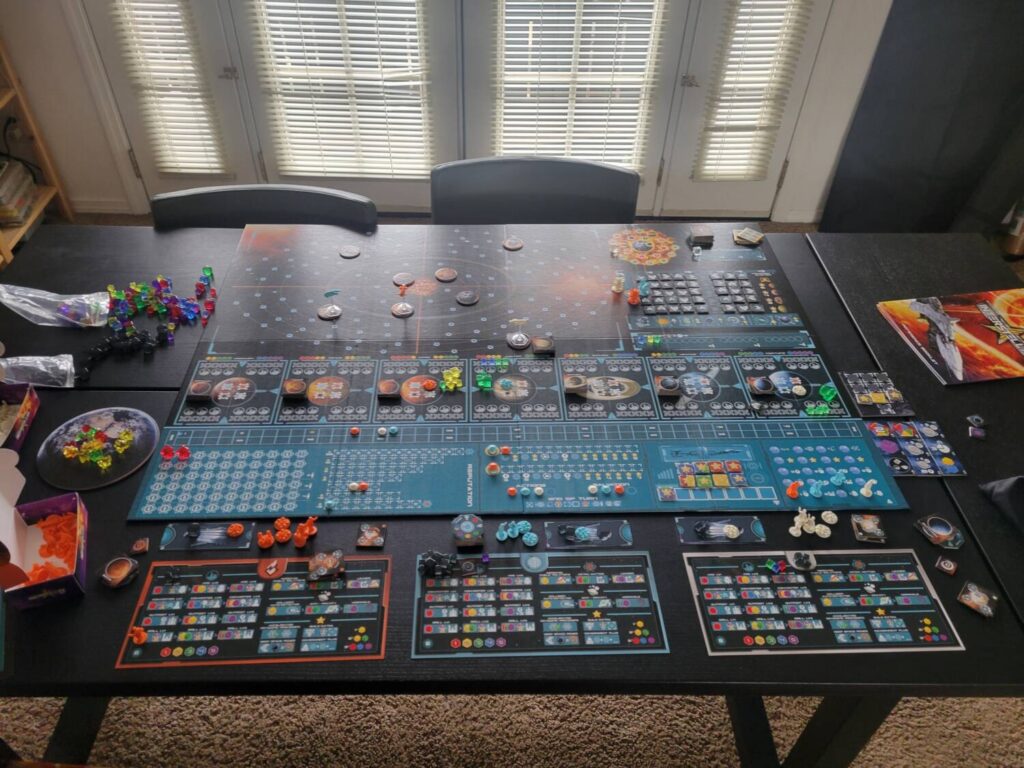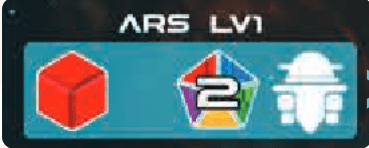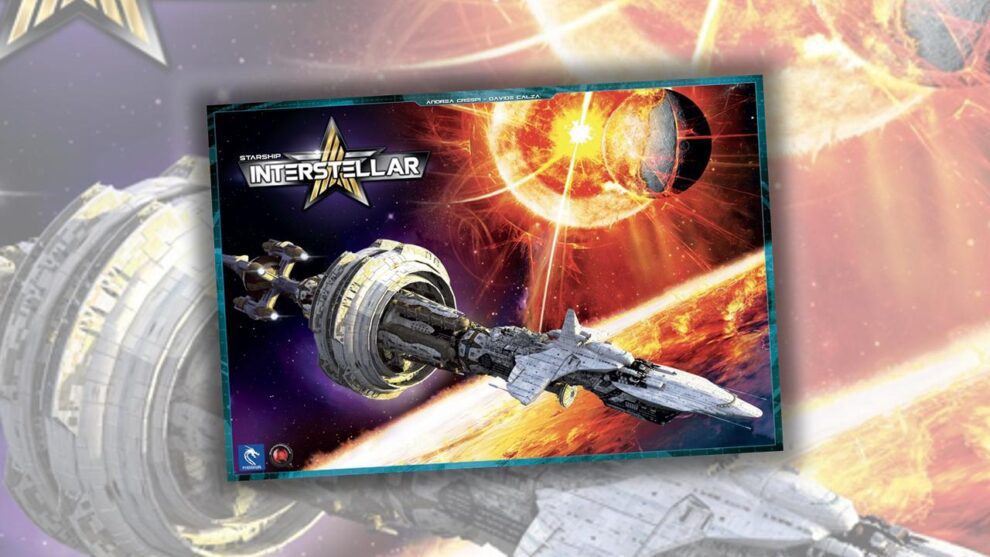Starship Interstellar has the parts that usually pique my interest in a game. It’s a murderer’s row of absolute bangers: abysmal graphic design, comically overlarge pieces, cubes of every shape, size, and color, and space exploration!
That might sound sarcastic, but my too-cool-for-school brain is almost immediately titillated when I encounter something that looks like a terrible product on its face. It made it to publication, so surely, there must be something to it, right?
I often hit more than I miss with this assessment, but this time it was a dramatic strikeout. My wager that goofy-looking things are often good was dead wrong.

Starship Cubepusher
Here’s how the game works: There’s a giant map of the solar system with 8 planets that will move around in orbits each round. You have a personal supply of fuel and resources, and a ship that you can load said fuel and resources onto, shooting it out into space to attempt to mine various planets.
Why are you doing this? Well, the sun is going to explode because we mined it too much, and we need to build an ark to escape.
To do that, we must first take Action Phases followed by Salvation Phases.
In the Action Phases, you play a single tile from a hand of tiles and take its action, placing them in a little stack. These actions let you fly your ship around spending fuel, set up bases, produce on planets where you’ve set up bases, research new technologies, extract from the sun for resources, and sell and buy resources on the market. Some tiles allow you to repeat them if they’re on the top of your stack, while others are one-shots.

There’s a pass mechanic reminiscent of Troyes or The Golden Ages where if you pass early, you get increasing bonuses the longer other players remain in the round.
After that, you enter the Salvation Phases. In these, you flip your tiles over and do the actions on the reverse side. These actions are more powerful and score points, and you’ll typically only do four of them, as they aren’t repeatable. You can acquire some more tiles, but only later in the game. These actions allow you to spend the cubes you were extracting and buying in the previous phase to save population meeples to move up on a reputation track (granting bonuses), build the ship (for points and track bonuses), fly a little drone through space (for points), and place your scientist miniatures as politicians in government for various bonuses. If you’re the highest and leftmost scientist in the aforementioned government area, you get to be governor, which gets you points at the end of the round.
Calibration Issues
The central loop of the game is like this: calculating how much fuel you need, flying your ship places, producing resources and getting them automatically shipped back to Earth for use, and converting those resources into points. It’s like a lot of eurogames, but this one has some serious issues in how fun it is to do anything.
First up, the graphic design. I’ve played a lot of games, and few of them have been as poor in terms of graphic design as this one. The icons are mapped very poorly to something that can be easily visualized and often end up standing in for entire sentences of rules grit or meaning two different things when the same icon is in different places. Player pieces are supposed to be placed on areas that cover icons, so you can’t see them. Pieces are too large or too small, constantly obfuscating resources. Here’s an easy example.

Each of your planetary bases has a deposit (a box for resources that you don’t have access to yet), a space to place your base miniature, three spots for building miniatures, and five small boxes to hold extracted resources (your storage). When you play your base tile, one resource is moved from the deposit to the storage area. If your ship is there, you get an additional resource moved. Then you activate your buildings. They either pull more from the deposit, do a conversion, automatically send resources back to Earth, or generate you some Fuel.
Sounds pretty straightforward, right? Well, that’s me condensing about 300 words of reference document from the reference book, because the icons on your player mat give no hint as to how to logic this out. Here’s the “auto send to earth” icon.

Now when I say that almost every aspect of the game suffers from issues that are adjacent to this, I am not exaggerating. Everything feels only partially calibrated. Expect a three-player game to take 3+ hours, and I play like greased lightning. You are artificially limited in what you can do by procedure after procedure after procedure, which feels as if each one was layered in to make sure that players can never actually make a gamble or a mistake.
It’s always a bummer to dislike a game that on its face should have everything that I love. Starship Interstellar is, unfortunately, exactly this. It’s boring, and every mechanical flourish (the planets orbiting every round, for instance) is buried underneath a pile of paperwork that the game makes no effort to help you understand. You will also find yourself interacting with other players a whopping zero percent. If you’re looking for a lightweight but substantial space economy simulator, go play SpaceCorp: 2025-2300AD. If you want the high complexity exactitude of the horrors of deep space, High Frontier beckons. Don’t let this game waste your time.












Add Comment